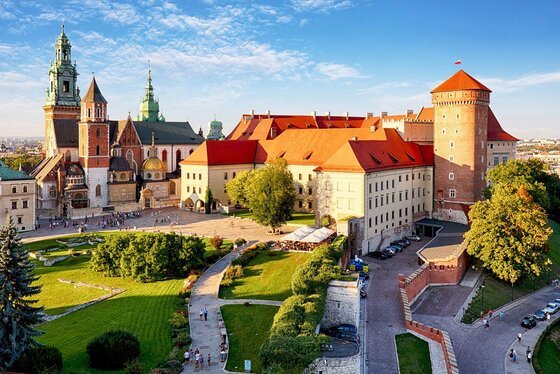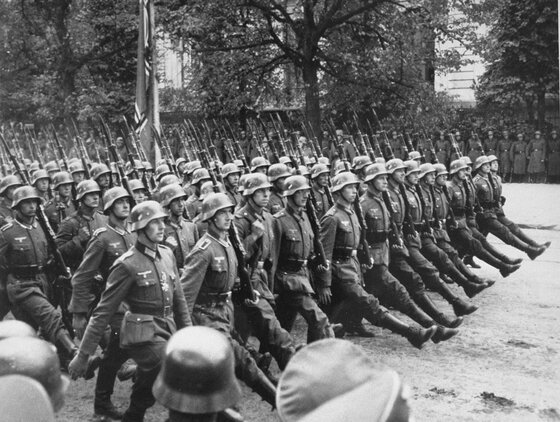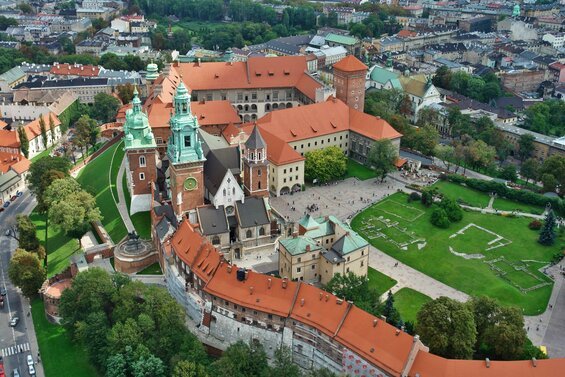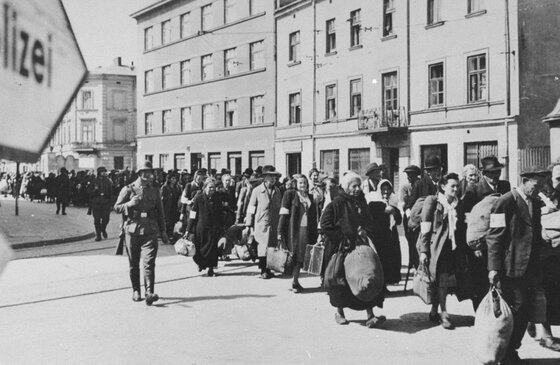
I read historical fiction for the ways it can illuminate the past. When the characters are fictional, it’s the historical setting that intrigues me more. So, imagine my disappointment when it only gradually dawned on me that this novel was not about the Polish Jewish resistance and the liquidation of the Kraków Ghetto in 1943. Instead, it’s a romantic tale of a woman caught between the love of two men on different sides in the war. My mistake.
Estimated reading time: 7 minutes
I almost never look at the company that publishes the books I buy. Had I done so, I would have realized that The Kommandant’s Girl was a Harlequin Romance. Still, for the nuggets of information about the Jewish Resistance in Kraków, I persisted to the end. (Many years ago I visited the city, which had been home to members of my mother’s family for centuries.) The book is well enough written, and the history accurate as far as it goes, so I managed to make it to the end.
For what it’s worth, the story
Nineteen-year-old Emma Gershmann Bau is the daughter of a poor Orthodox Jewish baker. At the University of Kraków, she meets and falls in love with Jakob Bau, whose well-to-do family is prominent in the Jewish community. But barely three weeks after they marry in August 1939, the Nazis crash into Poland, and Jakob, who is political, goes underground to join the Polish Jewish resistance. Emma and her aged parents are soon forced into the Ghetto, but there Emma is herself recruited into the Resistance.
She receives a new identity as Anna Lipowski and is smuggled out to the home of Jakob’s wealthy aunt, a Christian but a supporter of the Resistance. Her assignment: personal secretary to Kommandant Georg Richwalder, a senior official in the Nazi-created General Government of Poland. Working from the Kommandant’s headquarters in historic Wawel Castle, Emma—as Anna—grows close to her boss to steal papers important to the Resistance. The problem is, she falls in love with the man—a Nazi—all the while she pines for the missing husband she also loves.
The Kommandant’s Girl by Pam Jenoff (2007) 316 pages ★★★☆☆

The myth of “the Resistance”
Too many latter-day accounts of anti-Nazi organizing on the European Continent give the impression that some monolithic movement called “the Resistance” was active in many countries. That was not the case. In France, for example, “the Resistance” comprised major underground movements organized by the Free French followers of Charles de Gaulle and by the French Communist Party, among others. The two major networks collaborated at times but far from always. In fact, there is evidence that each betrayed members of the other to the Nazis on more than one occasion. Conditions were similar in Yugoslavia, where the Communist National Liberation Army under the command of Josip Broz Tito often worked at cross-purposes with its rival, the Chetniks. And in both countries, there were smaller, unaffiliated groups as well. There was no single Resistance.
The Polish Resistance in World War II
The largest underground movement in Europe
In Poland, the largest underground movement in Europe operated in both the Soviet and Nazi zones. It was remarkably successful in disrupting German supply lines to the Eastern Front, supplying invaluable intelligence to the British, and saving Jewish lives from the Holocaust. There, too, the Resistance was splintered. The largest force was the Polish Home Army, which was loyal to the Polish government in exile in London. But there were at least seven other factions, some of which never consented to merge with the Polish Home Army, and the Polish Jewish underground, which operated independently of the others.

By the beginning of 1943, when the Resistance portrayed in The Kommandant’s Girl was most active, the Polish Home Army had reached a strength of at least 200,000 partisans. (It would later grow to as many as 500,000.) By the following year, three other Resistance groups operated in Poland with 160,000, 70,000, and 30,000 fighters respectively. And this does not include the Polish Jewish underground that led the Warsaw Ghetto Uprising in 1943, the largest single Jewish revolt in World War II.
The Polish Jewish Resistance in Kraków
“On the eve of World War II,” according to Yad Vashem, the World Holocaust Remembrance Center, “the Jewish population of Kraków was approximately 60,000, constituting about one quarter of the city’s population. . . [But] by the time the ghetto was established and closed on March 20, 1941, only about 20,000 Jews remained in the city.” In The Kommandant’s Girl, Emma Bau’s parents remain confined there even as she goes to work for the Nazis. Deportations from the Ghetto began in June 1942, as ever-larger numbers of Jews were sent to the death camps or shot to death in the process. And as the terror mounted, Jewish youth groups—Communist, Socialist, or Zionist—gravitated into Resistance activities. The novel reflects their efforts to undermine the Nazis, including a well-documented bombing attack on a cafe frequented by Nazi officers.

Aerial view of Wawel Royal Castle, located on the bank of the Vistula River, for centuries the seat of Poland’s government. The Nazis seized it for the headquarters of their General Government of Poland. “Anna Lipowski,” the Kommandant’s girl, works in this building in the novel. Image: Poland Travel
From Yad Vashem: “The remainder of the Krakow ghetto was liquidated in March, 1943. Most of the Jews of the ghetto were finally sent to Auschwitz.” There, the few thousand survivors of four years of Nazi terror were among the 960,000 Jews incinerated in the ovens, 865,000 of whom were gassed on arrival.

About the author

Pam Jenoff is a law professor at Rutgers University in New Jersey and practiced law before 9-11. Since then, she has written eleven novels, many of which have been bestsellers. The Kommandant’s Girl was her first. The setting in Poland reflects her experience working in that country for the US State Department. She lives in Philadelphia.
For related reading
For another gripping story of a young Jewish woman who “passed” under the Nazis, see The German Girl by Armando Lucas Correa (A deeply affecting novel of the Holocaust). And for a novel about Jews in Kraków during the same period, see The Girl from Krakow by Alex Rosenberg (World War II from a Polish perspective).
More generally, see 15 good books about the Holocaust, including both fiction and nonfiction.
You might also enjoy:
- 10 top nonfiction books about World War II
- The 10 best novels about World War II
- 7 common misconceptions about World War II
- The 10 most consequential events of World War II
- Top 20 popular books for understanding American history
And you can always find my most popular reviews, and the most recent ones, on the Home Page.


























